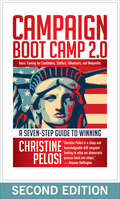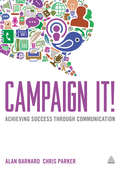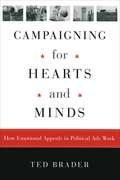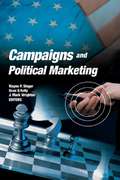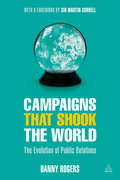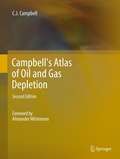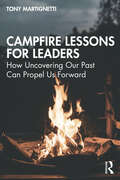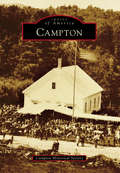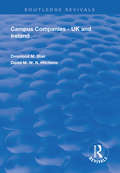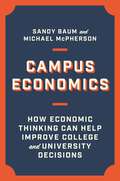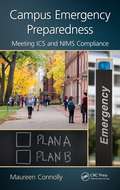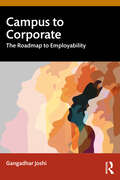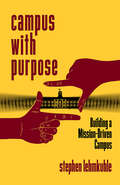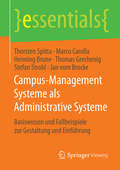- Table View
- List View
Camino Hacia La Libertad Financiera: La trayectoria de una latina aprendiendo a manejar su dinero correctamente
by Darlene NúñezEstoy encantada de compartir cómo yo, junto con mi marido, he trabajado para conseguir un futuro mejor para nuestra familia tras sobrevivir a una crisis financiera importante. A pesar de los retos y los obstáculos, tuve que dar unos pasos necesarios para vivir una vida abundante y plena. Aunque recé y lloré por la decisión, la realidad era que por mis circunstancias no podía unirme.Me dolió mucho. Estaba rodeada de soldados en servicio activo, sus esposas, mi familia de militares y muchos compañeros de trabajo que vivían una vida digna como resultado de su empleo en la administración. Esto tuvo un impacto importante en mis creencias para alcanzar el éxito. Aunque me impulsaba la seguridad de estar en el ejército, mi trayectoria profesional me condujo hacia un viaje que me enseñó muchas cosas sobre la administración y la educación financiera. En este libro, estoy emocionada de compartir ese viaje contigo. Desde los altibajos hasta los errores y triunfos, estoy aquí para compartir las cosas que se convirtieron en los pilares de mi vida para el éxito financiero. Sé que los pequeños tesoros que comparto te serán de gran beneficio.
Camino Hacia la Esperanza
by Alissa Translations Eder HolguinCamino Hacia la Esperanza es una historia conmovedora que en la que el autor se relata de como pasó de vivir en las calles a convertirse en un empresario exitoso. El libro aporta una lección para todos y demuestra que, aunque la vida pueda ser cruel y brutal, incluso los más desfavorecidos se puede superar las probabilidades y encontrar la felicidad: Su propia Camino Hacia la Esperanza. La narración que capta la atención y suena con autenticidad; A menudo es triste, chocante, pero al final edificante y motivador.
Caminos para retomar el control de sus finanzas: Presupuesto, Inversión y Crecimiento de Valor Neto
by Gary RandolphControlar sus finanzas es un arte que debería ser aprendido por todos, ya que los balances financieros ayudarán a ahorrar en finanzas y ayudar a crecer nuestro ingreso neto. Esta detallada guía indica sobre inversión, presupuestos y otros asuntos financieros relacionados. Los créditos y las tarjetas de crédito bancario le harán gastar más dinero del que tiene en su ingreso mensual. Este estilo de vida no es sostenible, por lo que, tarde o temprano, tendrá que afrontar sus consecuencias. Pueden vaciarse todos sus ahorros. Si desea conocer mejor cómo balancear sus finanzas, pues esta guía es para usted. La guía le enseñará: - Cómo vivir bajo sus propios medios - Tener más fuentes de ingresos - Siempre gastar menos de lo obtenido - Crédito bancario - Cómo hacer las compras balanceando el ingreso - Fondo de exigencias - Presupuestos - ¡Y más! Si quiere mantener sus finanza en orden, entonces esta guía es para usted. --> Vaya arriba en la página y de click a añadir al carro para comprar instantáneamente
Camp Dresser & McKee: Getting Incentives Right
by Ashish Nanda M. Julia Prats"If you try to use money to motivate behavior, you are in a powerful and dangerous place, especially with engineers and scientists," remarked Tom Furman, CEO of Camp Dresser & McKee, Inc. (CDM), a consulting environmental engineering firm. Historically, CDM had followed an "egalitarian" management bonus program based on qualitative measures. As industry growth decelerated and competition intensified since 1991, management changed the incentive plan to tie it closer to the achievement of business objectives. This case describes the bonus and incentive compensation system and the evaluation process. It ends with Furman reflecting on how to interpret the CDM system to reward four CDM executives suitably.
Campaign And Party Finance In North America And Western Europe
by Arthur B. GunlicksThis book provides information about how policies and practices regarding public financing abroad, focusing on North America and several Western European countries, can help Americans develop their own ideas about reform possibilities.
Campaign Boot Camp 2.0: A Seven-Step Guide to Winning: Basic Training for Candidates, Staffers, Volunteers, and Nonprofits
by Christine PelosiChristine Pelosi presents leadership lessons from the campaign trail from a diverse array of over forty public figures, lending advice for anyone who wants to run for office, advocate for a cause, or win a public policy issue. This book draws from her leadership &“boot camps&” conducted in over thirty American states and in three foreign countries, working with thousands of volunteers and dozens of successful candidates for office from city council to US congress. Campaign Boot Camp 2.0 is basic training for future leaders who hear a call to service—a voice of conscience that springs from their vision, ideas, and values—and want to translate that call into positive change. Pelosi outlines the seven essential steps to winning: identify your call to service, define your message, know your community, build your leadership teams, raise the money, connect with people, and mobilize to win. Each chapter concludes with a &“Get Real&” exercise so readers can personalize and integrate these ideas into individual efforts. In this edition, Pelosi updates the book's &“Call to Service&” profiles of political leaders and their calls to service; details the expanding role of social media, the Internet, and technology as message multipliers; explores challenges unique to women candidates; and expands on the power of volunteers.
Campaign It!
by Alan Barnard Chris ParkerCampaign It! provides a new definition and understanding of what makes a cause. It explains why, in our modern society, a communications campaign is the most powerful way to achieve success. And it demonstrates how it is possible to create and apply an irresistible communications campaign to any aspect of our professional and personal lives. Whatever the situation, we always need to influence others if we are to achieve our goals. Campaign It! can help you do that. It's written by leading professionals who demonstrate that communications can be created in such a way that the message becomes powerful and compelling. At the heart of every successful campaign is a cause that motivates and drives a desire to succeed. With such a cause anyone can apply the Campaign It! model to devise a communications campaign to create success.
Campaign It!: Achieving Success Through Communication
by Alan Barnard Chris ParkerThis ground-breaking book redefines campaigning and explains how to create and deliver a compelling campaign that can be applied in any aspect of your professional and personal life.Based on a claim that is both bold and true, this book introduces and demonstrates a new, unique and complete approach to communication for change - the Campaign It! model. It is a model developed and used by leading professionals in communications and campaigning to create influence and change at the highest levels business, politics and society. It is transferable to any sphere of life. It is tried and tested. And it works.Simply put: to achieve change and be successful you always have to inform, persuade and gain agreement from significant people and organizations. The Campaign It! model enables you to do this powerfully and positively.
Campaigning for Hearts and Minds: How Emotional Appeals in Political Ads Work (Studies in Communication, Media, and Public Opinion)
by Ted BraderIt is common knowledge that televised political ads are meant to appeal to voters' emotions, yet little is known about how or if these tactics actually work. Ted Brader's innovative book is the first scientific study to examine the effects that these emotional appeals in political advertising have on voter decision-making. At the heart of this book are ingenious experiments, conducted by Brader during an election, with truly eye-opening results that upset conventional wisdom. They show, for example, that simply changing the music or imagery of ads while retaining the same text provokes completely different responses. He reveals that politically informed citizens are more easily manipulated by emotional appeals than less-involved citizens and that positive "enthusiasm ads" are in fact more polarizing than negative "fear ads." Black-and-white video images are ten times more likely to signal an appeal to fear or anger than one of enthusiasm or pride, and the emotional appeal triumphs over the logical appeal in nearly three-quarters of all political ads. Brader backs up these surprising findings with an unprecedented survey of emotional appeals in contemporary political campaigns. Politicians do set out to campaign for the hearts and minds of voters, and, for better or for worse, it is primarily through hearts that minds are won. Campaigning for Hearts and Minds will be indispensable for anyone wishing to understand how American politics is influenced by advertising today.
Campaigns and Political Marketing
by Sean Kelly Wayne Steger Mark WrightonUnderstand the theoretical-and practical-aspects of political marketing!Over the past few years political marketing strategies have been refined with the help of new findings in political science research. Campaigns and Political Marketing clearly discusses the most recent political science research studies and theories that political activists and professionals can apply to effectively campaign for an issue or candidate. This text is an invaluable compilation of research, theory, and practical application from political science experts across the country that guides readers through the complexities of everyday political marketing and campaigning. Readers get the critical knowledge needed on how to best affect public viewpoints and gain the strongest advantage over the opposition.Campaigns and Political Marketing is packed with information and insights every political activist will find useful. It coherently explains the real world of campaign politics and elections, presenting the everyday issues that political consultants face in the field, all made easily understandable even to the novice. This scholarly examination provides lessons that can be effectively applied to just about any situation. Political crises and scandals are discussed in detail, with research and historical studies that illuminate practical ways to deal with any problem. The book is extensively referenced and uses graphs and charts to clearly explain research findings.Campaigns and Political Marketing answers these tough questions: What is the role of professional campaign consultants-and their value? How have the past four presidential elections revised the state presidential vote forecasting equation? How does interest groups&’ resource distribution differ from resource allocation decisions made by candidates&’ organizations and the national political parties? How does congressional campaign candidate scheduling differ from legislative candidate scheduling? How effective are attack messages in generating media coverage early in a campaign? How do political professionals define campaign crises? What are the differences in public reaction when a candidate from one or the other of the two major parties is in a scandal? How is public opinion affected when tragedy strikes a political candidate?Campaigns and Political Marketing is stimulating, idea-generating reading that is perfect for educators and students in marketing, communications, and political science; practitioners in campaigns and marketing; and political activists of all types.
Campaigns that Shook the World
by Danny RogersOver the past four decades, a series of PR campaigns have helped to shape popular culture and influence public opinion. Campaigns that Shook the World provides the inside story on the pivotal PR campaigns of the past four decades, following and celebrating the maturation and expansion of the PR industry towards today's practice. It examines ten of these campaigns in detail from the 1970s to the present day, explaining their strategy and tactics, looking at the imagery and icons they created and interviewing the powerful, flamboyant personalities who crafted and executed these seminal projects. Each chapter is built around extended case studies including Thatcherism (1979), New Labour, The Royal Family, The Rolling Stones (1981), David Beckham, London 2012, Product [RED], The Obama Campaign (2008) and Dove Real Beauty. Featuring campaigns by Saatchi & Saatchi, Bell Pottinger, Ogilvy, Freuds, Pitch and other well-known agencies, Campaigns that Shook the World grapples with PR's uneasy place at the nexus of politics and celebrity, holding the best campaigns up to scrutiny and showcasing just how powerful PR can be as an instrument of change, for the good, and at times for the less than good. It contains insights from Alastair Campbell, Lord Tim Bell, Alan Edwards, Paddy Harverson, Matthew Freud and many others.
Campbell Soup Co.
by Steven C. Wheelwright Geoffrey K. GillDescribes the engineering effort at Campbell Soup Co. to develop a microwavable package and product for the growing convenience segment. Focuses on the role of engineering services in developing the production process, acquiring and installing equipment, and getting the process up and running. Students must address not only the status of the current project, but also the future steps that must be taken to complete that project successfully. Even more broadly, engineering's role as a reactive service organization vs. increasing demands that will require a proactive strategic advantage-based organization must also be addressed. Written from the perspective of the head of the engineering group at Campbell Soup Co.
Campbell Soup Co.: A Leader in Continuous Replenishment Innovations
by James L. Mckenney Theodore H. ClarkCampbell Soup, like most food manufacturers, faced grocery chain and wholesale demand for its goods driven by Campbell's own promotional pricing structure rather than retail consumer demand. Former policies to encourage overstock created huge swings in production and inventory levels. Campbell's introduced continuous product replenishment (CPR) under which they would manage inventory for their customers, enabled by electronic data interchange to link supply to actual demand. Implementing this channel shift required a restructuring of relationships with its customers and a radical restructuring of its promotional policies.
Campbell and Bailyn's Boston Office: Managing the Reorganization
by Anne Donnellon Dun Gifford Jr.Ken Winston, the regional sales manager at a securities brokerage firm, has reorganized his generalist salespeople into "Key Account Teams" (KAT), to increase sales of specialized, higher-margin fixed income products. Winston is also implementing a new corporate performance management system. To help improve coordination between sales and marketing, Winston must solicit feedback from marketing staff on how responsive his salespeople are to marketing's directives. The marketing group has information on product costs that allow it to forecast product profitability, and by persuading the sales force to focus on those products the marketers can improve firm-wide margins. The KAT model, implemented six months earlier, has challenged the core internal values of the organization - such as a salesperson's control of his or her customer base and the appropriateness of product specialization. However, the long-term test of the new organizational structure will be its alignment with external changes in the securities industry: how securities are bought and sold and the types of new products flooding the market.
Campbell and Bailyn's Boston Office: Managing the Reorganization
by Anne Donnellon Dun Gifford Jr.Ken Winston, the regional sales manager at a securities brokerage firm, has reorganized his generalist salespeople into "Key Account Teams" (KAT), to increase sales of specialized, higher-margin fixed income products. Winston is also implementing a new corporate performance management system. To help improve coordination between sales and marketing, Winston must solicit feedback from marketing staff on how responsive his salespeople are to marketing's directives. The marketing group has information on product costs that allow it to forecast product profitability, and by persuading the sales force to focus on those products the marketers can improve firm-wide margins. The KAT model, implemented six months earlier, has challenged the core internal values of the organization - such as a salesperson's control of his or her customer base and the appropriateness of product specialization. However, the long-term test of the new organizational structure will be its alignment with external changes in the securities industry: how securities are bought and sold and the types of new products flooding the market.
Campbell's Atlas of Oil and Gas Depletion
by Alexander Wöstmann Colin J CampbellCampbell's Atlas of Oil and Gas Depletion, Second Edition, is the product of a half-century of critical analysis and updating of data on the status of oil and gas depletion by country, region and the world as a whole. Separate analyses of conventional and non-conventional oil and gas, which are depleting at different rates and costs, show when these critical energy sources peak and decline. The Atlas also summarizes the history and political circumstances of each country to assess the impact on oil and gas production and reserves. It contrasts the First Half of the Oil Age, which saw the rapid expansion of the world economy, allowing the population to grow six-fold, with the Second Half, which will witness a general contraction as these easy, high-density energy supplies dwindle. The transition threatens to be a time of great economic, financial and political tensions. The Atlas, which has been compiled and updated by prominent geologist, former oil company executive, and oil analyst Colin Campbell since the 1960s, addresses the need for a reliable and comprehensive database on a subject essential to governments, industry, academia, and the population as a whole as we attempt to adapt to these critically changing circumstances.
Campfire Lessons for Leaders: How Uncovering Our Past Can Propel Us Forward
by Tony MartignettiThis ideal companion for business leaders heading into a milestone moment offers practical advice to help them take something that can seem amorphous and abstract – living an intentional, purposeful life – and turn it into reality. Though it might seem counterintuitive, this book demonstrates that to move forward in the right direction, you must understand and integrate your past into your present. Readers will see how they too can step back and consider the "flashpoints" of their past in a way that will serve them as they take the next step of their life, from navigating a significant life change to simply living each day feeling less stuck and more purposeful. Leading coach Tony Martignetti shares the most powerful lessons from over 200 "Virtual Campfire" podcast interviews he’s conducted with driven individuals who decided to live intentionally rather than by default. As no two interviewees have faced the same challenges or pursued the same goals, readers will be inspired by these diverse insights to embark on – and sustain – their own unique transformations. Packed with questions, journaling prompts, and real-world exercises to help readers understand their past at a deeper level and integrate it into their present, this book provides a valuable toolkit for business leaders and professionals in any industry who feel unfulfilled and uncertain about what’s next for them.
Campton (Images of America)
by Campton Historical SocietyLocated in the southern region of the White Mountains, Campton was granted its charter in 1767 by Gov. John Wentworth, who was in office between 1767 and 1775. Early settlers from Connecticut and Massachusetts were lured by the beauty of the rivers and mountains and beckoned by the fertile fields and virgin forests. Generations that followed the Abenaki Indians transitioned from an agrarian society to one now dominated by the hospitality industry, providing today’s inhabitants with jobs in tourism and recreation. Although local ski resorts and neighboring Plymouth State University remain the largest employers in the area, an increase in small businesses and self-employment opportunities began in the mid-20th century. However, it was the completion of I-93 through Campton in the late 1960s that changed many lives, providing an easy commute to jobs outside the immediate area. Without abandoning the values of its founders and what it means to be a community, Campton has fully embraced change over the centuries.
Campus Companies: UK and Ireland (Routledge Revivals)
by Desmond M. Blair David M.W.N. HitchensFirst published in 1998, this volume explored the recent growth in university-based commercial start-up companies as a means of applying research in industry and as an alternative method of funding. Blair and Hitchens melded the practical experiences of universities with more theoretical understandings of technology transfer to assess whether it is more effective for universities to make commercial use of their research themselves as opposed to licensing, whether this is an effective way to get research applied by industry and the economic implications of these decisions. Drawing on the experiences of 25 universities, of which 18 are in the UK and Ireland, and including a detailed study of the QUBIS Group from Queen’s University of Belfast, the authors explore universities’ deliberate commercial exploitation of their research through university spin-off companies, the potential stresses on staff who are simultaneously academics and entrepreneurs along with universities’ attitudes to the practice and possible managerial strategies.
Campus Economics: How Economic Thinking Can Help Improve College and University Decisions
by Sandy Baum Michael McPhersonAn invaluable primer on the role economic reasoning plays in campus debate and decision makingCampus Economics provides college and university administrators, trustees, and faculty with an essential understanding of how college finances actually work. Sandy Baum and Michael McPherson explain the concepts needed to analyze the pros, the cons, and the trade-offs of difficult decisions, and offer a common language for discussing the many challenges confronting institutions of higher learning today, from COVID-19 to funding cuts and declining enrollments.Emphasizing the unique characteristics of the academic enterprise and the primacy of the institutional mission, Baum and McPherson use economic concepts such as opportunity cost and decisions at the margin to facilitate conversations about how best to ensure an institution’s ongoing success. The problems facing higher education are more urgent than ever before, but the underlying issues are the same in good times and bad. Baum and McPherson give nontechnical, user-friendly guidance for navigating all kinds of economic conditions and draw on real-world examples of campus issues to illustrate both institutional constraints and untapped opportunities.Campus Economics helps faculty, administrators, trustees, and government policymakers engage in constructive dialogue that can lead to decisions that align finite resources with the pursuit of the institutional mission.
Campus Emergency Preparedness: Meeting ICS and NIMS Compliance
by Maureen ConnollyAn easily digestible guide, Campus Emergency Preparedness: Meeting ICS and NIMS Compliance helps you develop and organize emergency operation plans. It incorporates the key components recommended by the Federal Emergency Management Agency (FEMA) and the US Department of Education and outlines the roles and responsibilities of campus personnel befor
Campus to Corporate: The Roadmap to Employability
by Gangadhar JoshiThis book offers a fresh perspective on the techniques of coping with the challenges of transitioning from student life to a professional corporate environment. It presents an integrated approach and a workable plan for students to pursue and add value to their careers by developing life and business skills that could be seamlessly woven into a well-rounded personality.This book has been designed to help students stand out in terms of knowledge, skills and attitude. It delineates the transition needs (from classrooms to workplace) with clearly defined end results, imparting skills required to excel individually and as part of a team, as a matter of regular practise while working in the corporate world.The primary aim of this book is not just to place graduates in the corporate world but also to enhance their employability skills to make them globally employable in diverse disciplines. Replete with easy-to-use tips and tools with real-world applications, this book will be of immense value to final year graduates and post-graduate students, as well as placement officers of higher education institutions looking to achieve a good placement record.
Campus with Purpose: Building a Mission-Driven Campus
by Stephen LehmkuhleWhen Stephen Lehmkuhle became the chancellor of the brand new University of Minnesota-Rochester campus, he had to start from scratch. He did not inherit a legacy mission that established what the campus did and how to do it; rather, he needed to find a way to rationalize the existence of the nascent campus. Lehmkuhle recognized that without a shared understanding of purpose the scope of a new campus expands at an unsustainable rate as it tries to be all things to all people, and so his first act was to decide on the driving purpose of the campus. He then used this purpose to make decisions about institutional design, scope, programs, and campus activities. Through personal and engaging anecdotes about his experience as the inaugural chancellor at the University of Minnesota-Rochester, Lehmkuhle describes how higher education leaders can focus on campus purpose to create new and fresh ways to think about many elements of campus operation and function, and how leaders can protect the campus’s purpose from the pervasive higher education culture that is hardened by history and habit.
Campus-Management Systeme als Administrative Systeme: Basiswissen und Fallbeispiele zur Gestaltung und Einführung (essentials)
by Jan Vom Brocke Thorsten Spitta Marco Carolla Henning Brune Thomas Grechenig Stefan StroblDie Autoren vermitteln, was den Softwaretyp Campus-Management ausmacht, welche Funktionen zum Kern eines CMS gehören und welche nicht benötigt werden. Sie skizzieren die Datenbasis solcher Systeme in einem Referenz-Datenmodell. Vertiefend wird dieses Modell im Buch Ein Referenz-Datenmodell für Campus-Management-Systeme in deutschsprachigen Hochschulen (Carolla 2015) empirisch validiert beschrieben. Neben den Charakteristika Administrativer Systeme im Hochschulbereich illustrieren die Autoren die Einführung zweier produktiver CMS, die als Eigenentwicklungen in Bielefeld und Wien entstanden sind.





